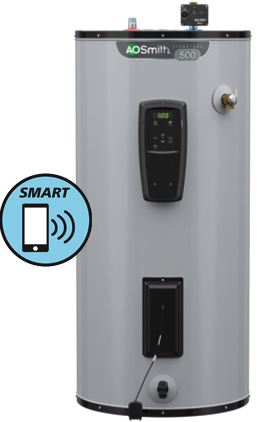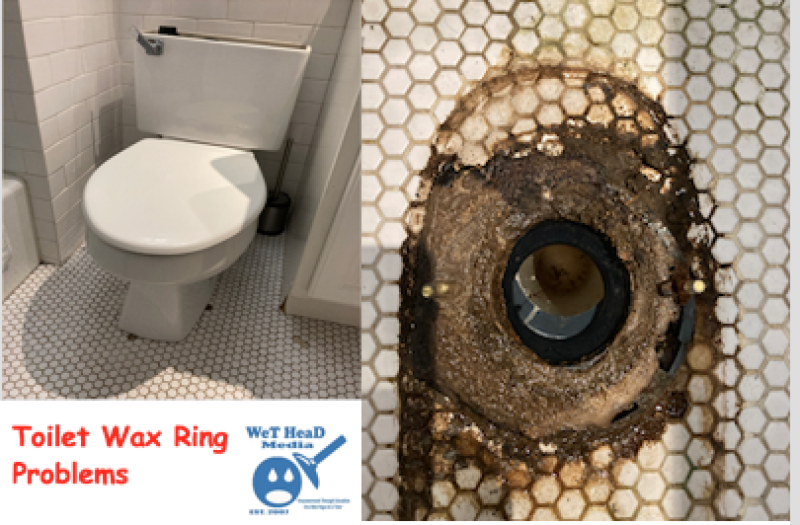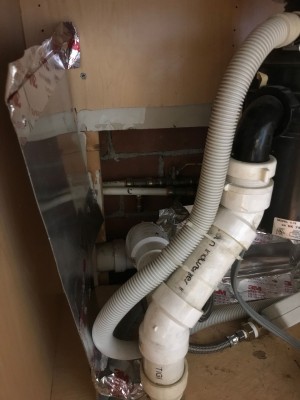Toilet Bowl Flapper Troubleshooting & Repair Guide
 The Toilet bowl is the most used plumbing fixture in any home or business. Millions of toilets are flushed every single minute worldwide. The toilet bowl flapper is one of the main parts responsible for making your toilet bowl flush. The toilet bowl flapper is also responsible for thousands of gallons of wasted water an hour if it has gone bad and has not been replaced. If your toilet bowl is running all of the time then you could possibly need to replace your toilet flapper. If you already know that your toilet is running because you need a new flapper and want to know how to install and replace your toilet flapper then you can read some of easy steps below. Taking a few minutes out of your day to replace your toilet bowl flapper can save so much needed water and also save you on your water bill.
The Toilet bowl is the most used plumbing fixture in any home or business. Millions of toilets are flushed every single minute worldwide. The toilet bowl flapper is one of the main parts responsible for making your toilet bowl flush. The toilet bowl flapper is also responsible for thousands of gallons of wasted water an hour if it has gone bad and has not been replaced. If your toilet bowl is running all of the time then you could possibly need to replace your toilet flapper. If you already know that your toilet is running because you need a new flapper and want to know how to install and replace your toilet flapper then you can read some of easy steps below. Taking a few minutes out of your day to replace your toilet bowl flapper can save so much needed water and also save you on your water bill.
There are many different brands and models of toilet bowl flappers that you can choose from on the market today. You can also buy toilet flappers in many places including big box stores, online, or even from a local hardware store. Hopefully one day you will be able to buy toilet flappers at your local corner store or gas station. If everyone replaced there leaking toilet bowl flapper you could just imagine the amount of water that would be saved per day.It’s a good idea that you change your leaking toilet flapper as soon as possible so your toilet can stop wasting water. Did you also know that if you toilet is running constantly all day long you could waste up to 200 gallons of water, yes that is true, you can waste that much water per day just from a bad toilet flapper.
Replacing and troubleshooting the toilet bowl flapper is a simple and straightforward process that requires few, if any tools. The most common reason the toilet bowl flapper will have to be replaced is because of age. Even though toilet flappers are designed to last for many years, they will need to be replaced at some point and time. Hard water conditions and high chlorine levels in the water can also cause toilet flappers to wear out faster then normal. Many toilet bowl part companies offer a special type of toilet bowl flapper that is designed for these types of water conditions.
How To Remove The Toilet Bowl Flapper
When you are ready to remove your old toilet bowl flapper you will want to shut the water supply valve off to the toilet before doing so. The toilet supply valve can be found 6″ from the floor on the left bottom side of the toilet tank. You will want to turn the valve clockwise to turn the water supply off. Once you have shut the water off you will want to flush the toilet bowl. Now that the toilet bowl has been flushed you should not have any water coming from the toilet fill valve. If you do, you will want to make sure that the water supply valve is 100% off. If there is no water coming from the toilet supply valve, you will now want to dry out the inside of the toilet tank with a sponge.
Before you can install a new toilet bowl flapper you must remove the old one from inside of the toilet tank. Depending on what type of toilet flush valve you have will depend on how you can remove the toilet flapper. There are two different types of materials that the toilet flush valve can be made from. You can either have a plastic toilet flush valve or one made from brass. You will either have to slide the toilet flapper off or unhook the toilet flapper ears from the flush valve. You will not need any tools to do so, you can just pull or pop the toilet flapper off.
While you are removing the old toilet flapper and you start to notice a black stain on your hands that will confirm that your toilet flapper is worn out and has been damaged by the water conditions. The toilet flapper rubber can break down from high levels of chlorine in the toilet tank water. The black stains come from the black rubber that the toilet bowl flapper is made from. If your toilet flapper is really old and falling apart you may want to wear gloves when removing it.
How To Install A Toilet Bowl Flapper
The first thing you will want to do before you install your new toilet flapper is to get a few things that you are going to need. You will need a pair of scissors, a sponge and a rag. The next thing you will want to do is to shut the water supply off to the toilet bowl. Once the water is off you will want to flush the toilet and hold the toilet handle down so all of the water in the toilet tank will go down the drain.
Now you will want to take your sponge and soak up all of the excess water that is left inside of the toilet tank. Once all of the water is out of the toilet tank you will want to disconnect the old toilet flapper from the toilet fill valve. After removing the old toilet flapper you will want to remove the toilet chain from the eyelet of the toilet flapper.
Once the toilet chain is disconnect from the old toilet bowl flapper you can put the old toilet flapper off to the side and then take your rag and wipe the face of the toilet flush valve to remove and debris or grime that the old toilet flapper could have left behind.
You know can take your new toilet flapper and slide it over the tank fill valve tube until you hit the bottom if you have a brass toilet fill valve. If you have a plastic toilet bowl fill valve you will want to take your scissors and cut the inner circle from the flapper and then attach the flapper onto the ears on side of the toilet fill valve.
The next step is to take the toilet chain and hook it to the eyelet on the toilet flapper. Once you have connected the chain to the flapper you will want to turn the water back on and fill the toilet tank full of water. Now once the tank is full you will want to flush the toilet and test out your new toilet flapper.
How To Make Any Toilet Stop Running
If your toilet bowl is running all of the time there only can be a few things that will cause this. The most common reason your toilet bowl is running is because the flapper or the flapper gasket have gone bad. So what you will need to do is to replace the toilet flapper inside of the toilet bowl. You will also want to check the toilet fill valve for wear and possible broken parts as well. There are a number of different style flappers that are available to purchase that are sure to stop your toilet bowl from running. The faster you fix that leaking toilet bowl, the faster you will start to save money on your water bill and also save water.
Toilet Flappers Vs Highly Chlorinated Water
If you live in an area that has very chlorinated water, your toilet flapper may be breaking down and wearing out faster then normal. Often the chlorine from t he water eats the standard cheap rubber toilet flappers. If you need to replace your toilet bowl flapper and you are having this problem you can use a specialty toilet flapper. Korky & Fluidmaster Toilet Parts both make a flapper that can withstand the chlorine in the water. The Korky Plus Premium Flapper is made from a red Chlorazone rubber. This red Chlorazone rubber toilet flapper will resist chlorine in the toilet tank water. The Red Korky Chlorazoned Rubber Toilet Flapper will fit both the brass and plastic type of toilet valves to make it easy to install, so you can get your toilet bowl to stop running fast.
What To Do When The Toilet Flapper Is Leaking
Many people wonder what they should do when their toilet bowl flapper is leaking and causing the toilet to run all of the time. The answer is simple; You should either replace the toilet flapper yourself or have a licensed plumbing professional do it for you. You could even ask a relative if they know how to change the toilet flapper as well. The most important thing to remember is that every minute that the toilet is running, its also wasting precious good clean water to go down the drain for no reason. You can buy a toilet flapper at big box stores such as Walmart, Home Depot, Lowes etc. You can also buy them from local hardware stores and even online from an online plumbing supplies website.
Adjustable Toilet Flapper Vs Standard Toilet Flapper
There is a specialty flapper that is sold called an Adjustable Toilet Bowl Flapper. This type of flapper is designed to be adjusted so you can save water by controlling the amount of water you use every time you flush the toilet. The Adjustable toilet flapper has a float that can be adjusted which will control the amount of water that the toilet will use when flushed. This is a great type of flapper to use if you have an older toilet bowl that uses more then 1.6 gallons of water when being flushed. There are many toilet repair part brands such as Fluidmaster and Korky that offer an adjustable toilet flapper.
How To Hook The Chain To The Toilet Flapper
If you have successfully removed and replaced your toilet bowl flapper you will now want to attach the toilet chain to the flapper so when you flush the toilet handle the toilet chain will pull up the flapper and the toilet will flush. If you have a nylon toilet bowl chain you will want to replace it with a metal toilet bowl flapper chain. Nylon or plastic toilet bowl chains stretch and wear out way faster then a metal chain, and that only means more problems down the road. Its always a good idea to replace the toilet chain with a metal one, when replacing the toilet bowl flapper.
To hook up the toilet chain to the flapper you will want to make sure the water to the toilet bowl is off. Once the water is off you will want to take the chain and look what link lines up with the eyelet on the flapper when the flapper is in the closed position. Next you will want to now take the chain and hook it onto the eyelet of the toilet flapper. Once you have hooked the chain to the toilet flapper, you will want to turn the water back onto the toilet tank, let it fill and then push down on the toilet handle to make sure your toilet bowl is flushing correctly.
Metal Toilet Flapper Chains Vs Nylon/ Plastic Toilet Chains
There are two main types of materials that toilet bowl chains are made from. You can have a plastic / nylon toilet bowl chain or you could have a metal toilet bowl flapper chain. The metal type of toilet bowl chain will give you less problems then the metal toilet bowl chain. The nylon or plastic toilet chains usually stretch out making the adjustment between the toilet handle and the toilet flapper to no be correct with an end result of the toilet not flushing, using less water per flush then needed or you possible will have to hold the toilet handle down when flushing the toilet.
If you have a plastic or nylon toilet bowl flapper chain you will want to replace it with a metal one to avoid these common problems and to save yourself from a non flushing toilet. The replacement of the toilet chain is fairly inexpensive and takes only a few minutes to do.




I have just installed a Korky Quiet fill system and it works fine. Why do i have to hold the handle down for a complete flush?
i have minimal slack in the steel chain.
I have replaced the flapper on my 2 piece toilet and as soon as I release the lever, the flapper falls back over the hole. I have to hold the lever about 5 seconds to get a good flush. I have compared the newly installed flapper to others in the house and I can’t see any difference in how I have put the new one in. Is there a trick to getting the flapper to stay up for a few seconds before it falls back down. I bought a universal Korky brand.
Hey Greg! I think I can help you there because I JUST did it to my toilet.
Check two things:
One, check the length of your chain and make sure it’s relatively short so that you can the most lift from your flapper.
Two, and here’s the big one, check if there is writing on the flapper that says Max and Min. If so, you have an adjustable flapper and it might be sent to the minimum setting. I twisted mine all the way to the other end to Max and now it stays afloat until the bowl is almost completely empty.
Hope this helps!